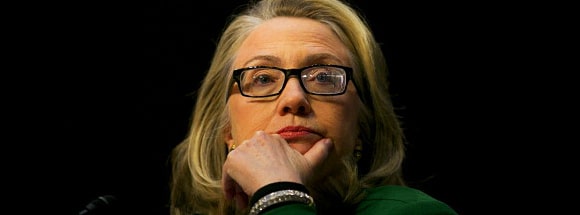How Female Leaders Should Handle Double-Standards
February 8, 2013
 By Herminia Ibarra for HBR Blog- IMF head Christine Lagarde tells a story about a woman leader she met who took over at a tough moment in her country’s history and resolved to be different. They had to cut the deficit and she wanted to set standards by personal example. When she travelled around the country, she took a small entourage of five cars. But the women she met in the villages asked her why only five cars when the men before her travelled with twenty-five. Stereotypes have been set and cast in stone, explained Lagarde, making women feel they have to act like men to be heard. “Keep your five cars,” Lagarde advised her, “dare the difference. Sometimes our five cars are better than their twenty-five.”
By Herminia Ibarra for HBR Blog- IMF head Christine Lagarde tells a story about a woman leader she met who took over at a tough moment in her country’s history and resolved to be different. They had to cut the deficit and she wanted to set standards by personal example. When she travelled around the country, she took a small entourage of five cars. But the women she met in the villages asked her why only five cars when the men before her travelled with twenty-five. Stereotypes have been set and cast in stone, explained Lagarde, making women feel they have to act like men to be heard. “Keep your five cars,” Lagarde advised her, “dare the difference. Sometimes our five cars are better than their twenty-five.”
How women are perceived — how they dress, talk, their “executive presence,” capacity to “fill a room,” leadership style and public image — has been the object of vast, well-intentioned efforts to get more women to the top. Voice coaches, image consultants, public speaking instructors and branding experts have filled the growing demand for these services.
The premise is that women have not been socialized to compete successfully in the world of men, and so they must be taught the skills their male counterparts have acquired naturally. But, at the same time, they must “tone it down” or risk being labeled as having sharp elbows.
Catalyst calls this the Dammed if You Do, Doomed if You Don’t dilemma — use twenty-five cars and you’re showing off, use only five and you lack power. As Facebook’s Sheryl Sandberg points out, women are perceived as too soft or too tough but never just right, and as competent or likeable, but rarely both. Either way, the research concludes, women are evaluated against a “masculine” standard of leadership that leaves them limited options and distracts attention from the task at hand.
When people are focused on how they are coming across to others — managing their image — they divert their attention away from their larger leadership purpose, are less clear about their goals and less open to learning. Lubna Olayan, the Saudi CEO of Olayan Financing, recalls a time in Jeddah when debate about her head cover trumped the content of her message. “We should just focus on what we have to do,” she concluded, “women shouldn’t be distracted by things that take away from what we are trying to accomplish.”
While women are likely no more susceptible than men to such diversions, subtle (and not so subtle) cultural biases can easily turn women’s attention inward as they try to reconcile conflicting messages about how to behave as leaders. What to do then, in a world when image and perceptions matter, and gender stereotypes remain firmly entrenched? My conclusions are:
- Understand how you are perceived and what role gender stereotypes play in those perceptions. Get informed about the research; don’t be naive.
- Have clarity of purpose. Know why you are doing what you are doing, and how it will advance the collective good.
- Be yourself. “Dare the difference,” as Lagarde advises. But do so skillfully. Don’t just let it all hang out; and never confuse “being authentic” with “fatal flaws” such as treating people poorly.
For instance, in a recent interview with members of Hillary Clinton’s press corps, a veteran reporter said: “The story is never what she says, as much as we want it to be. The story is always how she looked when she said it.”
Clinton says she doesn’t fight it anymore; she focuses on getting the job done.
Click here to read more: http://blogs.hbr.org/cs/2013/02/how_female_leaders_should_handle_double_standards.html

